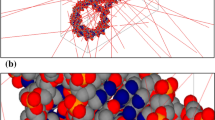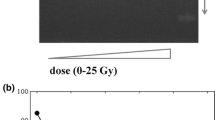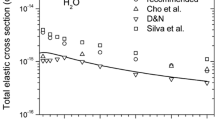Abstract
Plasmid pGEM 3zf(+) was irradiated by nitrogen ion beam with energies between 20 and 100 keV and the fluence kept as 1×1012 ions/cm2. The irradiated plasmid was assayed by neutral electrophoresis and quantified by densitometry. The yields of DNA with single-strand and double-strand breaks first increased then decreased with increasing ion energy. There was a maximal yield value in the range of 20–100 keV. The relationship between DNA double-strand breaks (DSB) cross-section and linear energy transfer (LET) also showed a peak-shaped distribution. To understand the physical process during DNA strand breaks, a Monte Carlo calculation code known as TRIM (Transport of Ions in Matter) was used to simulate energy losses due to nuclear stopping and to electronic stopping. It can be assumed that nuclear stopping plays a more important role in DNA strand breaks than electronic stopping in this energy range. The physical mechanisms of DNA strand breaks induced by a low-energy ion beam are also discussed.
Similar content being viewed by others
Author information
Authors and Affiliations
Additional information
Received: 30 July 1997 / Accepted in revised form: 18 January 1998
Rights and permissions
About this article
Cite this article
Chen, Y., Jiang, B., Chen, Y. et al. Formation of plasmid DNA strand breaks induced by low-energy ion beam: indication of nuclear stopping effects. Radiat Environ Biophys 37, 101–106 (1998). https://doi.org/10.1007/s004110050101
Issue Date:
DOI: https://doi.org/10.1007/s004110050101




